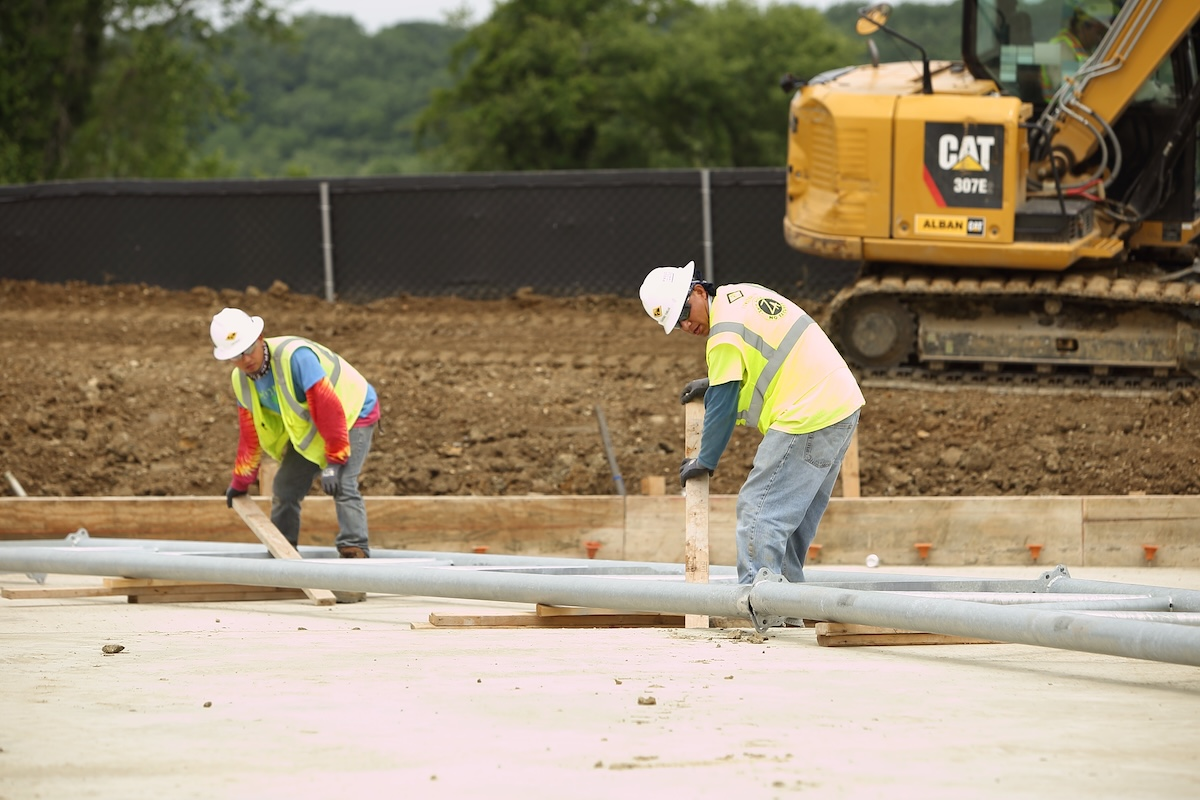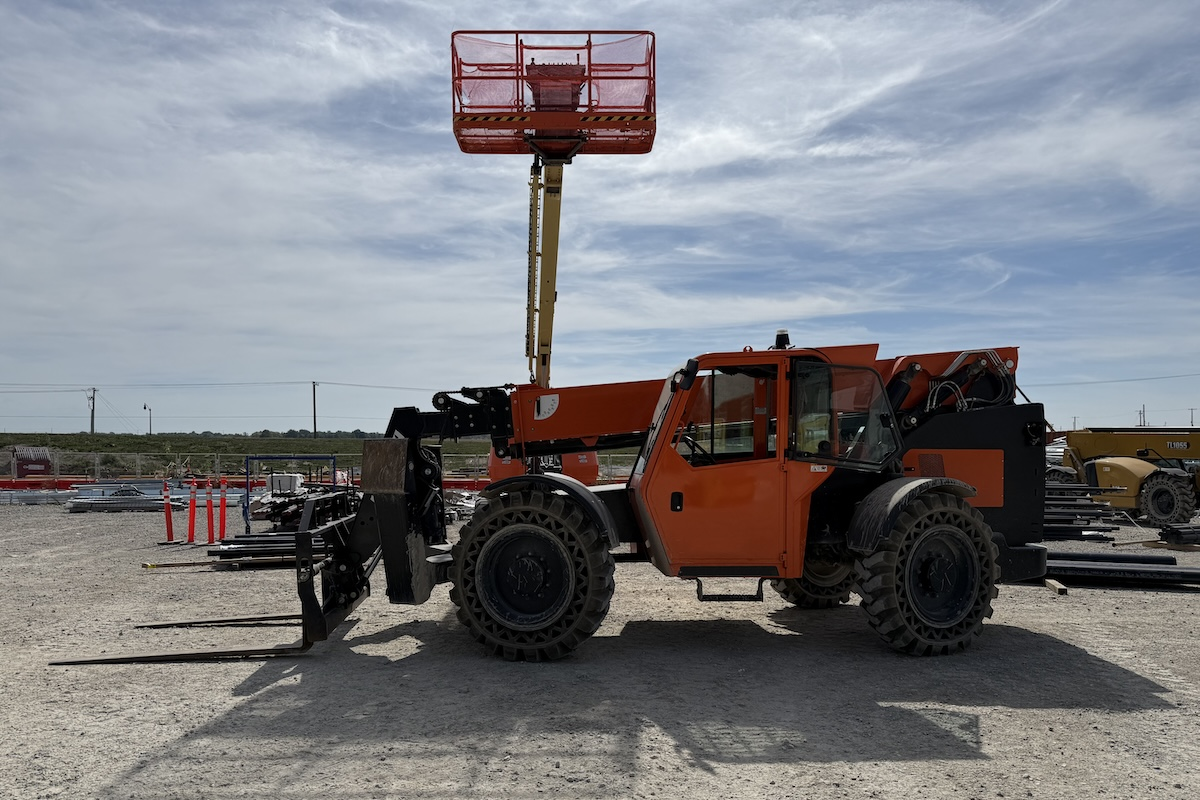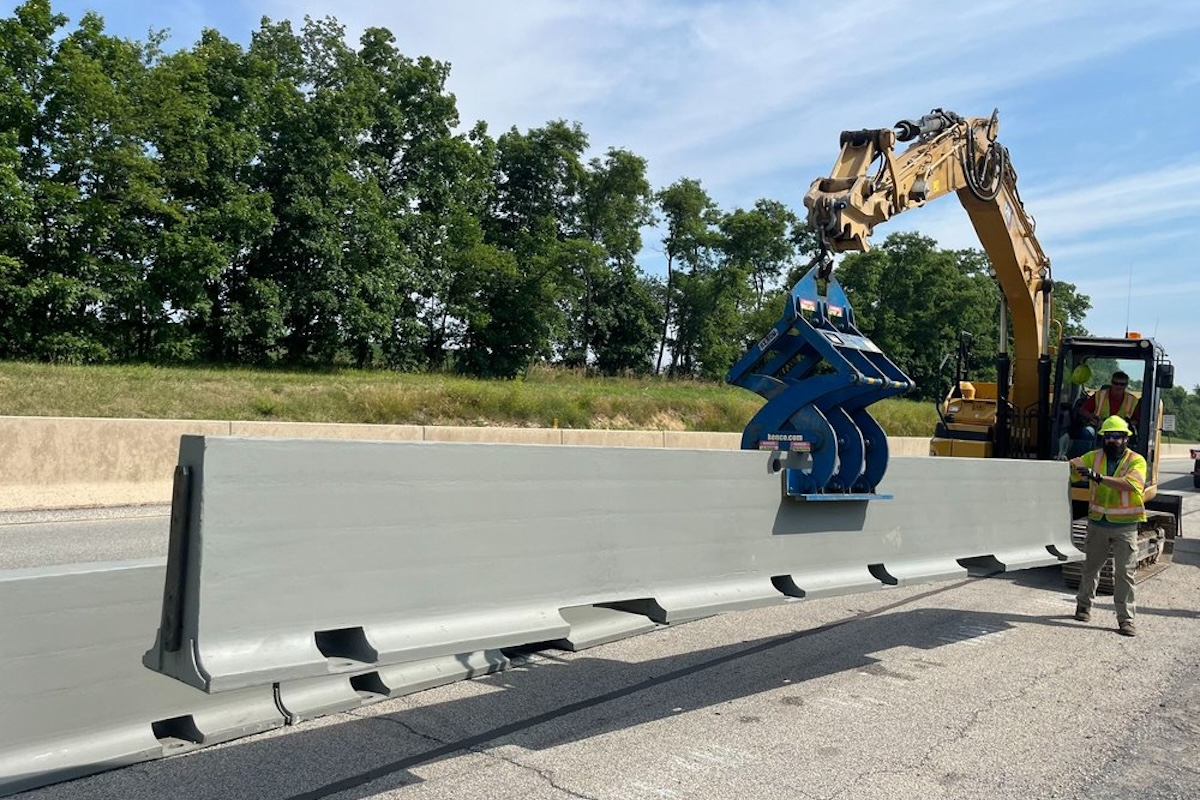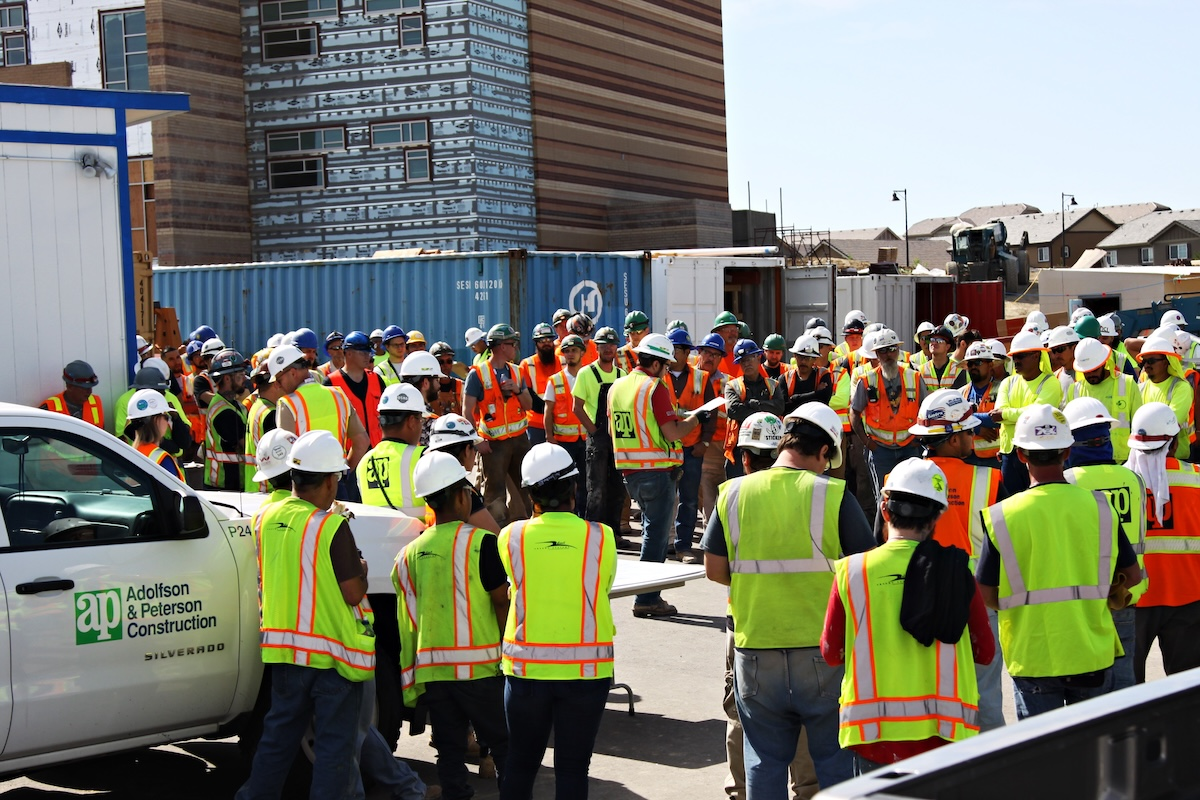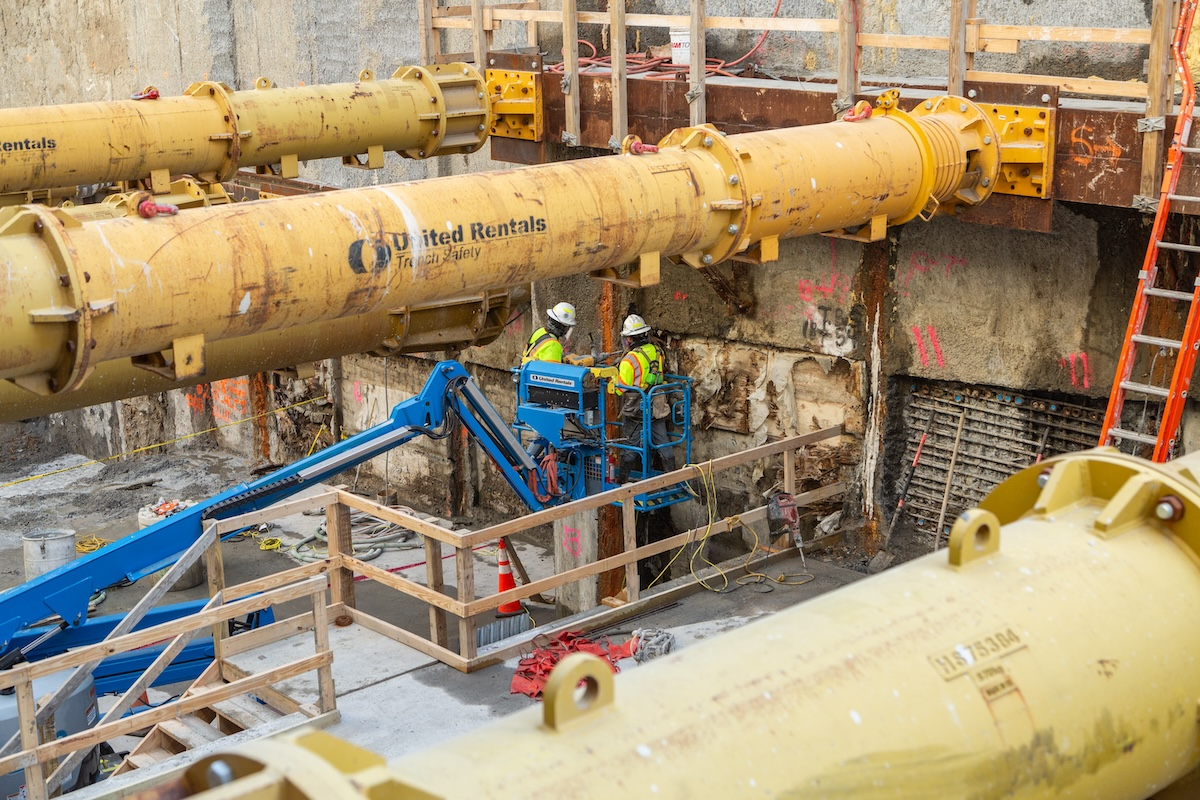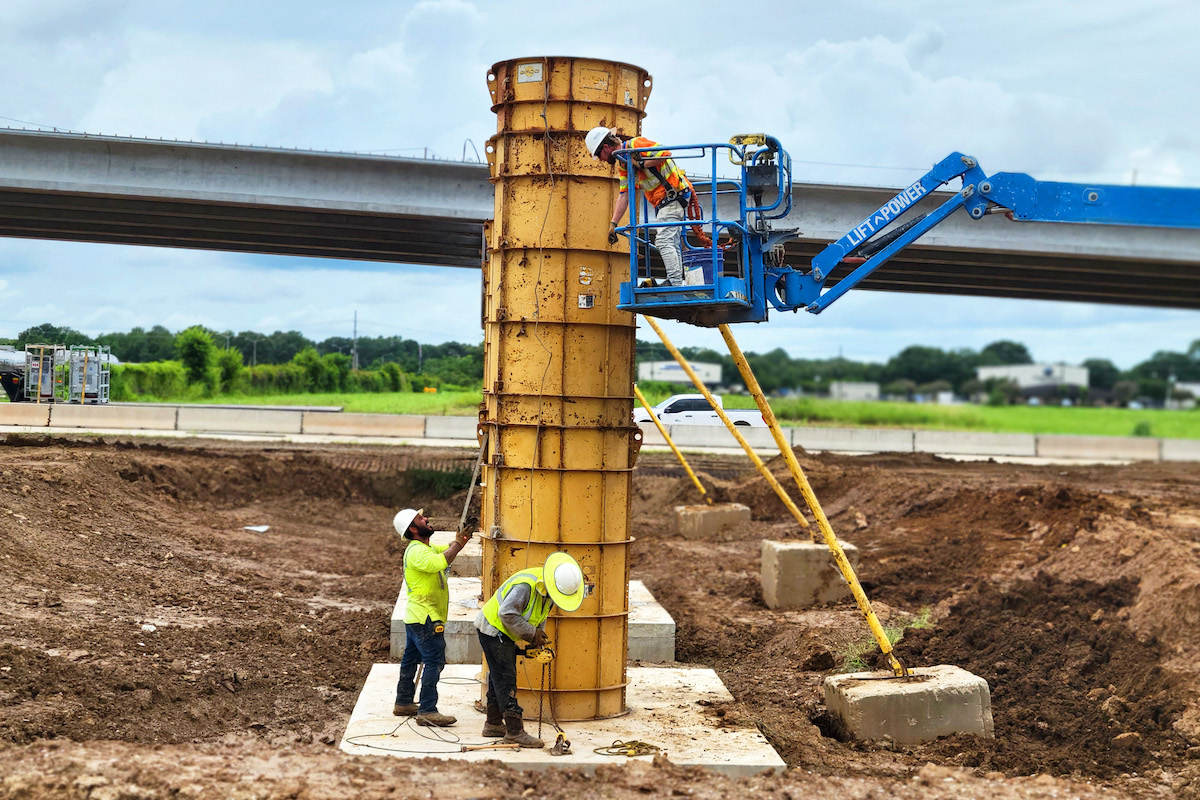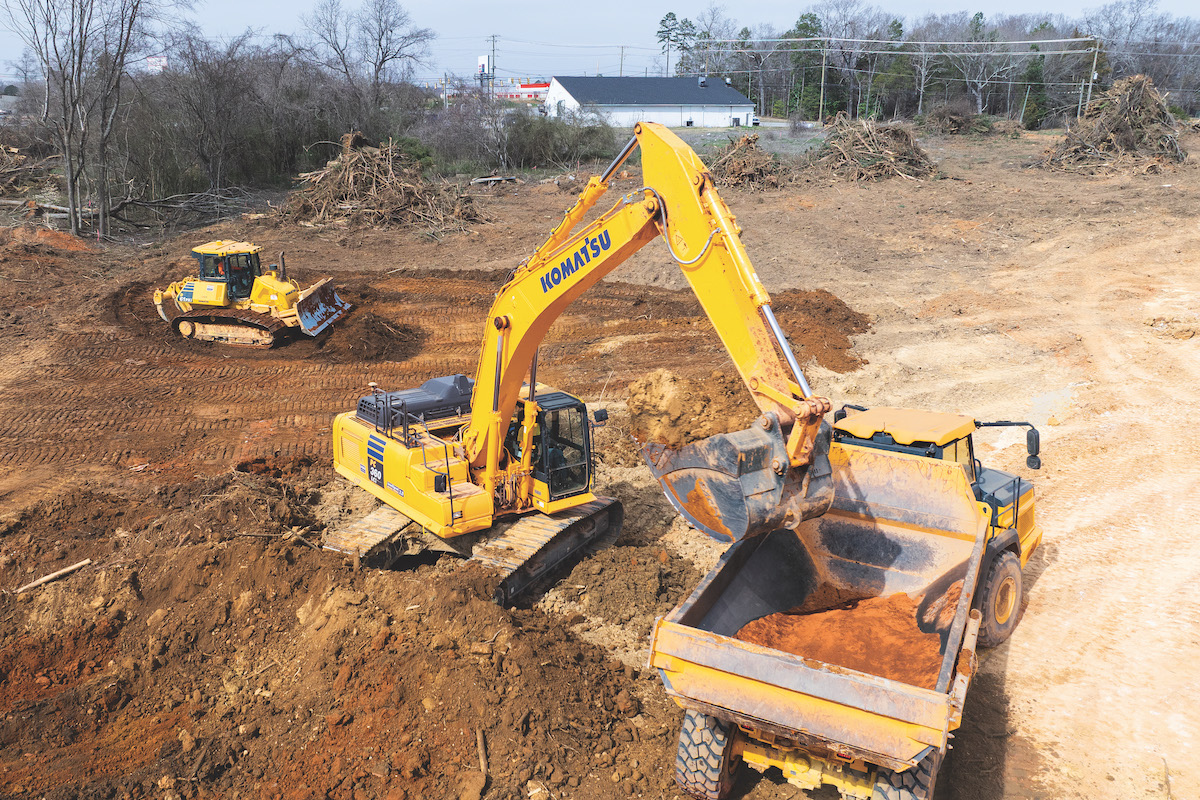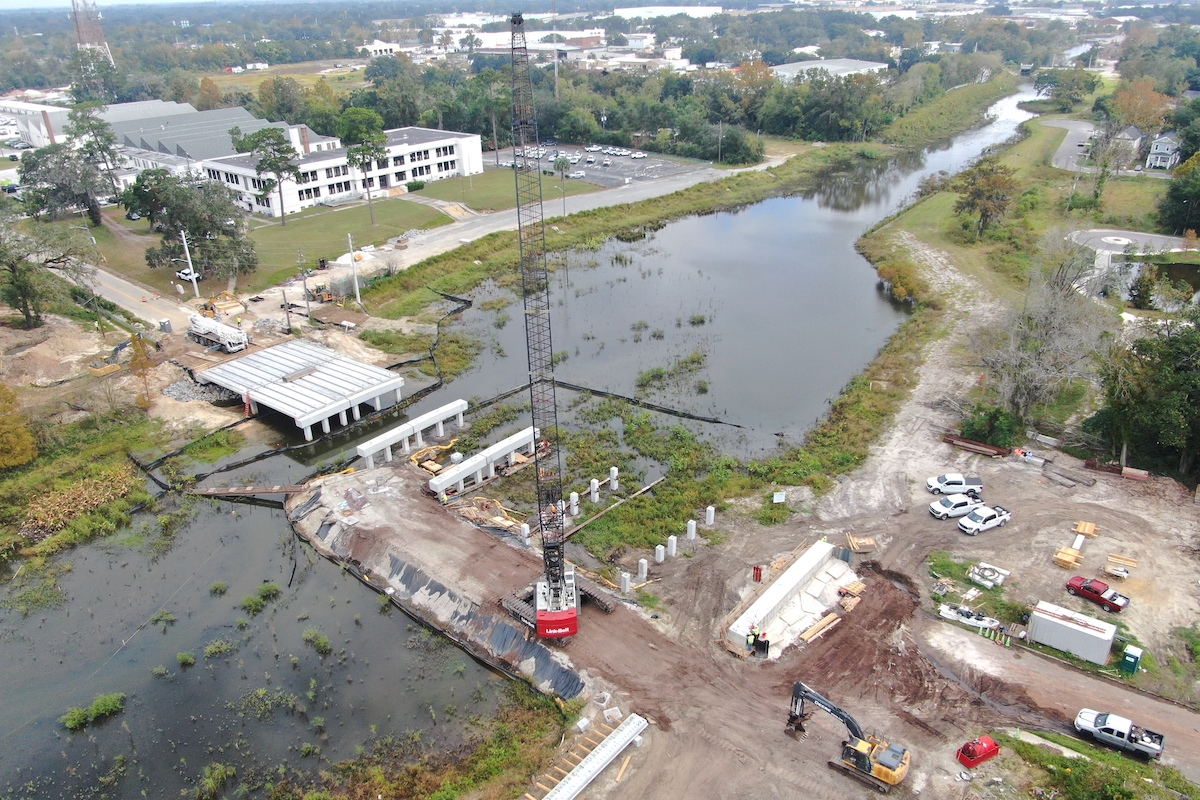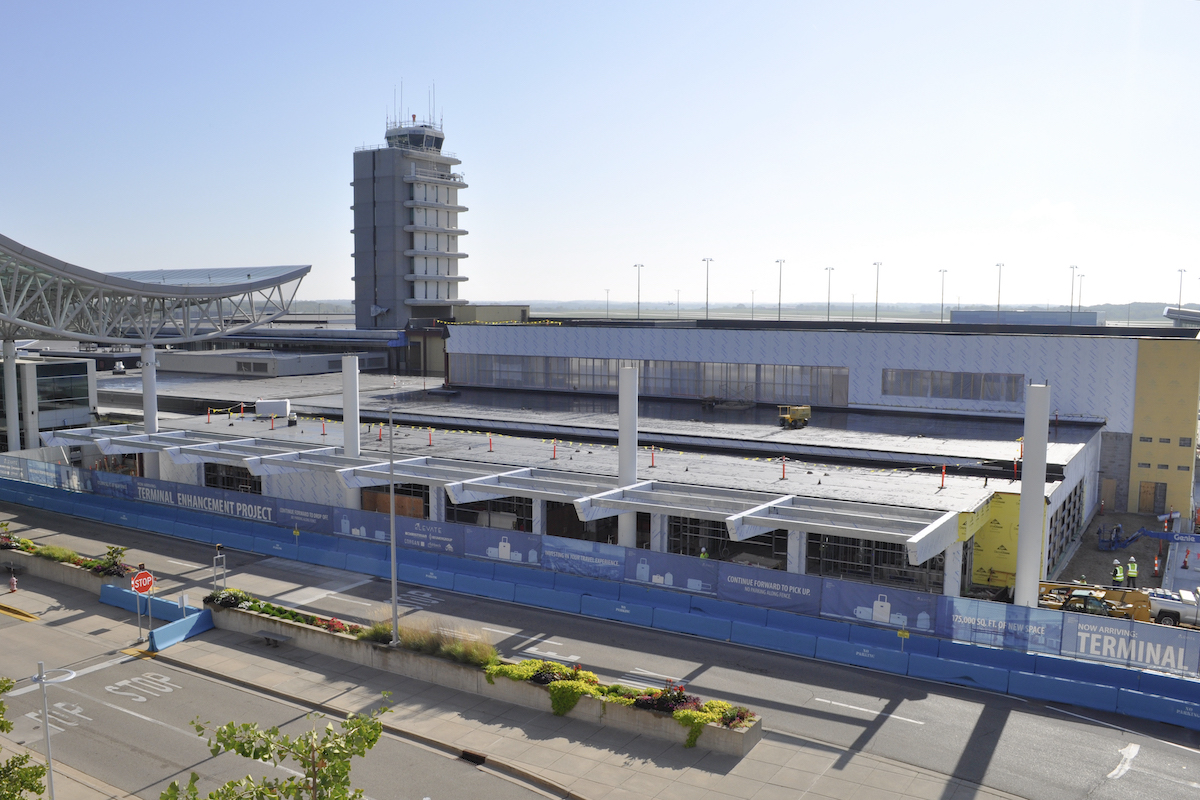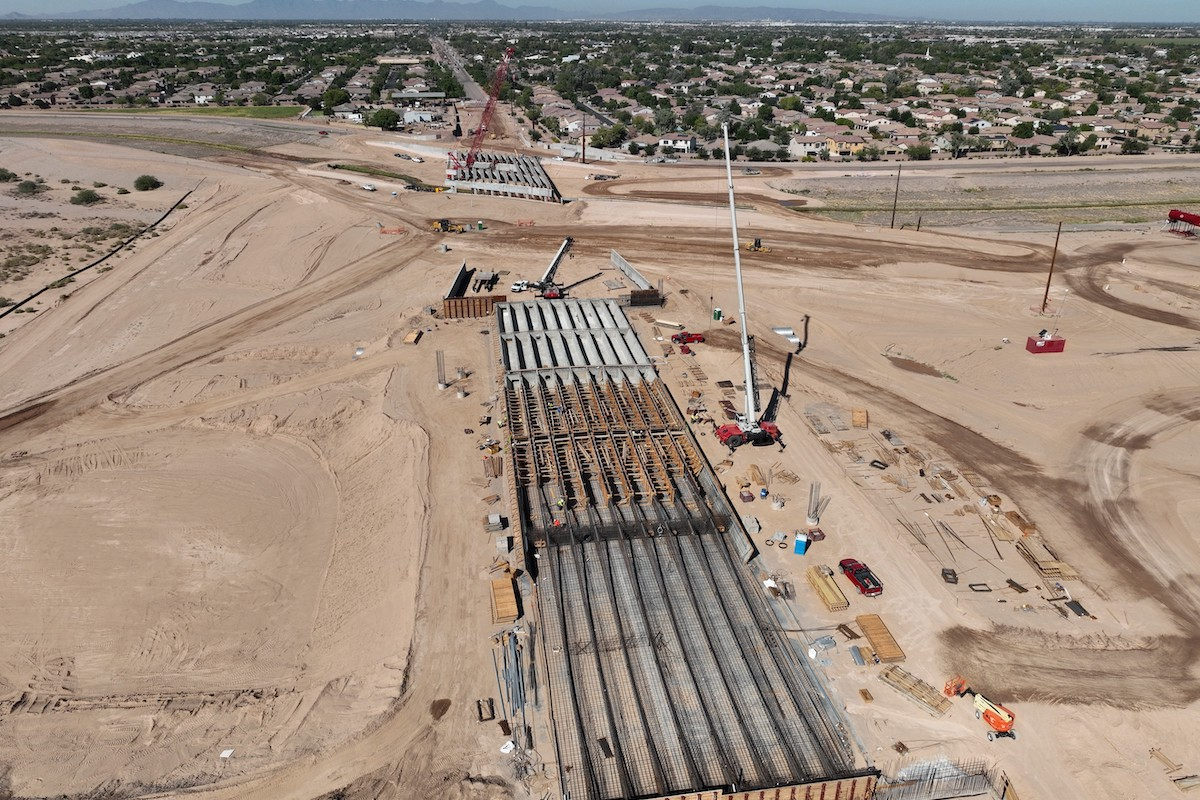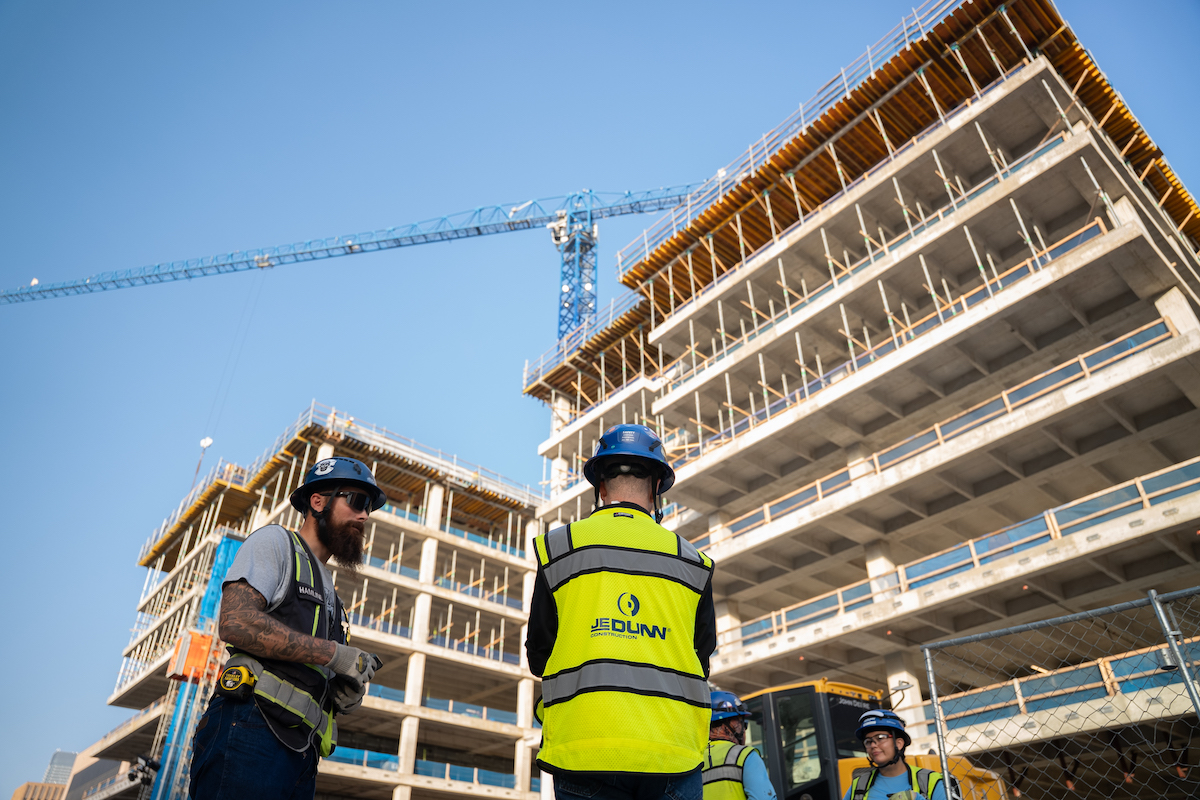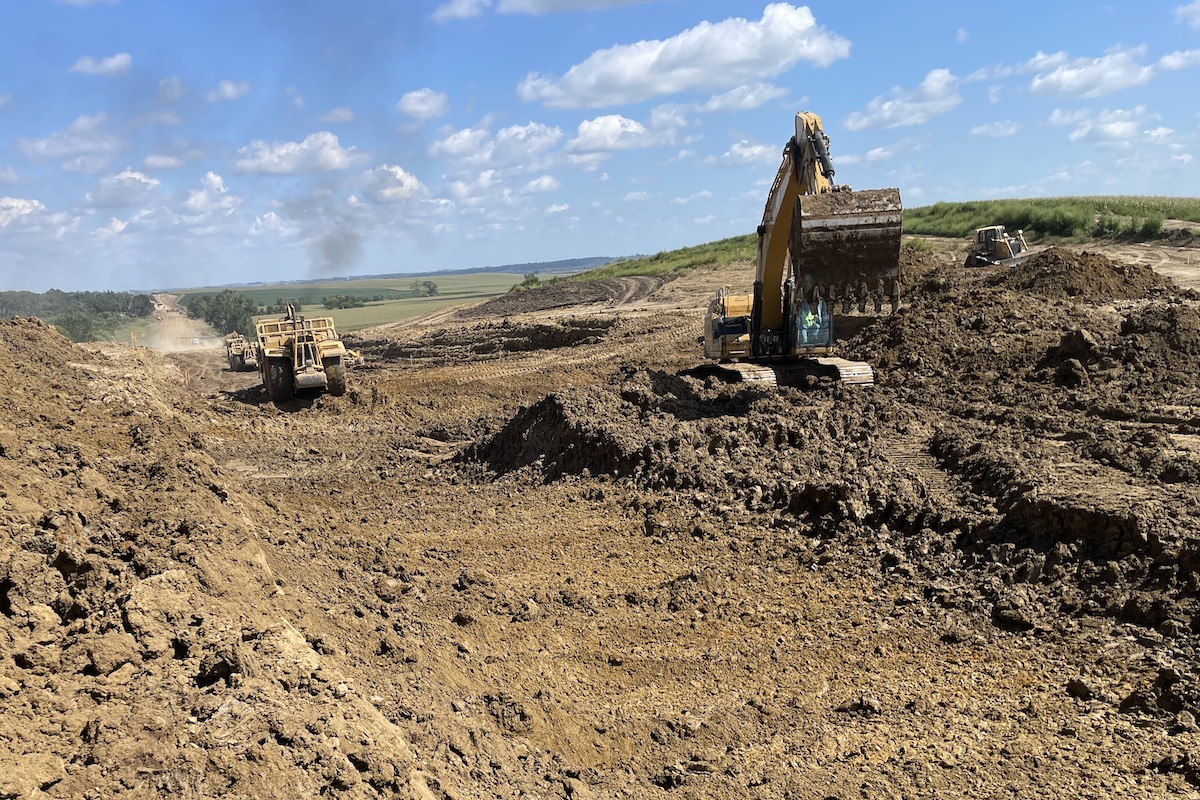Suffolk was tapped for the first phase of a six-story, out-of-the-ground expansion of Northwell Health’s eastern region flagship hospital — one of the country’s top 50 hospitals for heart surgery — in the Long Island community of Bay Shore, New York.
The South Shore University Hospital project, which broke ground in January 2023, is estimated to cost $531 million and is expected to be completed by mid-2026.
“This is a pretty significant building for Long Island suburbs, where they don't want supertall structures overseeing the area,” said Julie Yun, Suffolk Project Executive. “This is one of the tallest buildings on South Shore University’s campus. The structure is very similar to their tower building, which is seven floors.”
According to Suffolk, the project includes core and shell construction, foundations, steel superstructure, façade, back of house spaces, vertical transportation, fire protection, main mechanical, electrical, plumbing equipment, and distribution.
An extension to the hospital’s campus, the pavilion will host a lobby garden, 10 operating rooms, three procedure rooms, 33 pre- and post-op bays, 90 acuity adaptable patient beds, and a sky bridge connecting it to the existing hospital.
“While the building is new, we are operating on an active campus,” Yun said. “Our planning ensures no interruption to ongoing daily hospital operations.”
Over 3,000 pieces of steel had been installed on the project, and at the end of September 2024, the team reached a significant project milestone — the ceremonial placement of the pavilion’s final steel beam. This marked a major step toward the completion of the six-story, 190,000-square-foot inpatient bed-tower.
“Seeing the steel brings the vision to fruition,” Yun said. “You go through designing and producing drawings, and planning, and seeing the last piece of steel. That first structure really makes the project come to life.”
“It’s a significant and monumental milestone that starts the building façade enclosure,” she added. “The steel crew at JC Erectors did an amazing job. There were days that they would install 50 to 60 pieces of steel a day. The team worked very hard to make sure that all the steel was in place for the topping out.”
The new building has many different features, including a bespoke, custom frit; curtain wall glass; thin brick masonry and wood-look metal panels; a prefabricated rooftop unit that will house three of the hospital’s generators; as well as boilers, chillers, a cooling tower, and five air handlers.
The podium level design includes an integration of masonry thin brick and metal panels with punched windows. The upper floor hosts the curtain wall, which is prefabricated off site. On the backside of the building, there are elements of masonry, with louvers that connect to the air handler, and a tie into the sky bridge.
The Suffolk team recently completed the foundations, steel, and concrete on deck, and they are on the last roof level completing spray-on fireproofing.
In December 2024, they started the construction of the façade program, including the scaffolding and sheathing for the masonry brick, as well as the infrastructure risers to the roof.
“The next set of trade partners are contending with really cold weather,” Yun said. “Rainy and windy days along the shore in New York present challenges to the next group of trades who are reliant on favorable weather.”
Suffolk has brought in a variety of cranes to do the heavy lifting. Everyday service requires a Liebherr LR 1200 Crawler Crane designed for heavy lifting, which was used for the structural steel placement. They also plan to utilize several all-terrain mobile cranes throughout installation of heavy equipment, the largest of which is an LTM 1650.
“Being that we have a lot of the mechanical systems on top of the roof, there’s a very elegant, coordination-dance with the cranes,” Yun said. “We had a crane for the structural steel, we have one for the air handler, and then another one for the central prefabricated rooftop curtain wall and generators that will be rigged as well.”
Suffolk started rigging the air handlers in January and commenced the curtain wall in early February 2025.
Suffolk will also install two 20,000-gallon underground fuel oil tanks that will be feeding the hospital.
“That’s something that we will be installing in the summer after all the cranes are out of the way,” Yun said.
Water added a number of complications to the project. Long Island, New York, is known for its complex geological structure, mainly composed of glacial deposits. Because the hospital is approximately 1 mile away from the Great South Bay, it has a higher water table and is susceptible to seasonal fluctuations.
“We are located by the water, so we had to contend with high water tables while we were installing the foundations,” Yun said. “There were days that we were pumping out a million gallons per day just to get the ground dry and be able to install the foundations.”
Suffolk needed to add a well point to manage the large amount of water. According to Yun, the Department of Environmental Conservation’s (DEC) regulations determined the need for multiple shallow well points rather than one deep one. The addition of shallow wells provides important data on the presence of contaminants, changes in water levels, and the overall health of the water system. By having multiple monitoring points, the DEC can assess how construction activities might impact local groundwater resources.
“They asked for these conditions, as well as the water to be discharged into a treatment center prior to getting it discharged out back to the creek,” Yun said. “There was a lot of caution taken for that.”
Additionally, Suffolk installed 60-foot sheeting walls in front of the foundations to deflect the water patterns. A very deep clay layer meant using a vibro hammer to push in the sheets.
“We’re on an existing campus with hospital operations, so there was a lot of care and concern with the existing patients around. But it was done successfully with the help of our subcontractor, Darcon Construction,” Yun said. “Darcon really came through with the foundations and the tremendous amount of watering they had to contend with.”
Communication is key to the Suffolk team, and they have a weekly meeting with the hospital where the General Superintendent lays out a three-week plan.
“It’s a lot of communication, and meetings, and making sure what we’re going to do that day is done,” Yun said. “And if we see any challenges or any field conditions, ... everybody is notified.”
Yun emphasized the importance of notifying all stakeholders to make sure everyone is on the same page. She said that every detail of the project is “well-planned, thought out, and coordinated from every hour to the minute.”
“Northwell has been a great partner, and we're super excited to be part of this campus expansion,” Yun said.
- Site and Utilities: Dubner Construction
- Deck Foundations and Concrete: Darcon Construction
- Super Structure Fabrication: Cives Steel Company
- Erection: J.C. Steel Erectors
- Masonry: Giaquinto Masonry
- Core and Shell: Cord Contracting Co., Eagle One Roofing, Safway Hoist, Otis, L & L Painting Company, SIG Contracting
- HVAC: Donnelly Mechanical
- Electric: E-J Electric
- Plumbing: Lakeville Pace Mechanical
- Fire Protection: Premier













